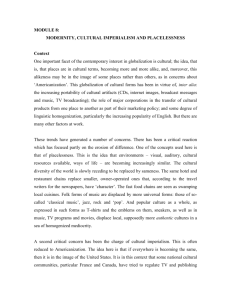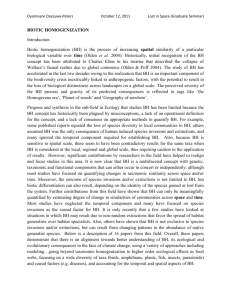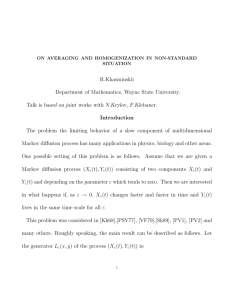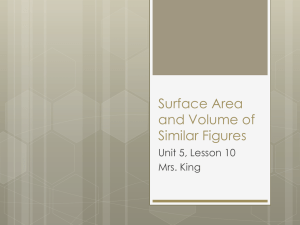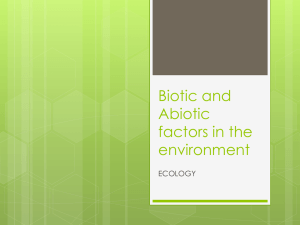Biotic homogenization - Phylodiversity Network
advertisement
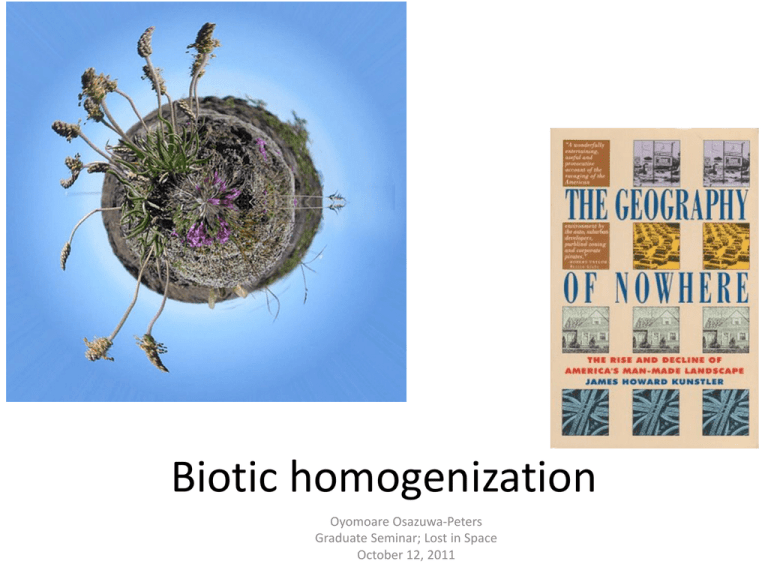
Biotic homogenization Oyomoare Osazuwa-Peters Graduate Seminar; Lost in Space October 12, 2011 Overview • History of Biotic homogenization (BH) • What exactly does BH mean? • What is the evidence for BH? History • Episodic mixing of biotas when physical barriers are removed – Formation of Panamanian land bridge between N and S America • Modern recognition of concept by Charles Elton What is BH? • Laliberte & Tylianakis (2010) refer to it as a phenomenon that reduces variability and uniquess of flora and fauna across regions. • “A gradual increase in compositional similarity among formerly distinct biological communities” (Naaf and Wulf 2010) • “A temporal increase in community similarity” (McKinney & Lockwood 1999). • “Biotic homogenization is the process by which species invasions and extinctions increase the genetic, taxonomic or functional similarity of two or more locations over a specified time interval” (Olden 2008). • “Biotic homogenization is defined as an increase in spatial similarity of a particular biological variable over time” (Olden et al. 2004). BH definition • • • • Change in similarity Space Time Main drivers – Species invasions – Species extinctions Identity of species dictates the outcome • Multiple levels of biodiversity of organization – Genetic – Taxonomic – Functional Olden 2008 Olden and Rooney 2006 EVIDENCE FOR BIOTIC HOMOGENIZATION? • Goal: compare patterns of species invasion, dispersal and impacts on three Eurasian seas • Ponto-Caspian= The Black Sea + Sea of Azov + The Caspian Sea • Low diversity low salinity temperate waters • Black Sea has become an international shipping destination • Goal: to determine how floristic similarity is affected by exotics on a continental scale • Data: native and exotic flora of America North of Mexico • Measure: Jaccard index of similarity J= a/(a + b + c) J ranges from 0 to 1 a is the number of species shared between two localities b and c are the numbers of species unique to either locality • Result: Exotic floras differ more among neighboring communities, but have a broader and more uniform distribution. • Goal: to quantify extent of functional and taxonomic homogenization across Great Britain between 1978 and 1998 • Data: National ecological surveillance data for Great Britain • Scale: random sampling plots of 10 – 200 m2 within 1 km2 regions • Functional traits: canopy height, specific leaf area, dispersal vectors, seed bank longevity Space & Time Space • Positive correlations between change in α diversity and change in trait variation between 1978 and 1998 • Conclusion: Plant communities became taxonomically less similar but functionally similar • Goal: to explore regional and elevational patterns in site similarity throughout the Holocene. • Data: eight fossil pollen datasets from Romania • Method: – They divided time into 250 years intervals from 11500 years BP till recent. – Used PCA and Bray-Curtis similarity analysis. • Conclusion: – Biotic differentiation = anthropogenic activities + climate change – BH= biotic interactions as immigration and competition – Most studies that do not account for time represent single snapshots in time • Goal: to understand the importance of patterns of extinction at a regional scale • Data: species list of amphibian species before and after extirpations associated with a pathogenic fungus • Approach: null model • Results Predecline Postdecline • Conclusion: Non random extinctions resulted in the decline of regional diversity of Central American amphibians. • Goal: to determine whether parasitoid host networks can be homogenized across a gradient of habitat simplification • Data: 48 quantitative food webs – parasitism events – parasitoid and host composition – unique parasitoid-host interactions – Strength of interactions Composition and frequencies of interactions Host relative abundances Parasitoid relative abundances • Goal: Explicitly test the effect of landscape fragmentation and disturbance on functional homogenization of birds in France • Data: French Breeding Bird Survey • Method: Community Specialization index (CSI) • Results: Functional homogenization Clavel et al. 2010: Worldwide decline of specialist species: toward a global functional homogenization? • Goal: to validate a theoretical model predicting the outcome of distinct invasion and extinction scenarios • Data: freshwater fish faunas in the USA at three spatial scales – Country – Provinces in California – Watersheds within provinces • Method: – used regression analysis – Seeded the model with empirical data • Conclusion – Fish communities homogenization was at different scales was due to • Introduction of ubiquitous species • No extinctions • Differential patterns of native species extinctions Take home message • There is evidence for BH at different scales – Most BH studies focus on taxonomic homogenization – Neglect of temporal comparison – Most studies are performed at continental scales • What are the implications of BH? – Disruption of potential for local adaptation – Reduced resilience of ecosystems to disturbance Papers for discussion 1. Olden et al. (2004) Ecological and evolutionary consequences of biotic homogenization 2. Smith et al. (2009): Selecting for extinction: nonrandom disease associated extinction homogenizes amphibian biotas 3. Abadie et al. (2011): Landscape disturbance causes small scale functional homogenization, but limited taxonomic homogenization in plant communities.

